The Oil Painting Guide For Beginners
Welcome to the vibrant world of oil painting! If you've ever gazed at a masterful artwork and felt a twinge of envy or inspiration, you're not alone. Oil painting is not just a hobby; it's a gateway to expressing your innermost thoughts and emotions on canvas. This guide aims to provide you with a comprehensive overview of oil painting techniques, materials, and tips tailored specifically for beginners. By the end of this journey, you'll be equipped with the knowledge and confidence to embark on your artistic adventure, allowing your creativity to flourish.
Before diving into your first painting, it's crucial to understand the essence of oil paints. Unlike watercolors or acrylics, oil paints are made with pigments suspended in oil, usually linseed oil. This unique composition gives oil paints their characteristic richness and depth. They dry slowly, allowing artists ample time to manipulate colors and blend seamlessly. This section will help you choose the right paint for your projects, ensuring that you select the best quality for your artistic expression.
Now that you're familiar with oil paints, let's talk about the essential tools and materials you'll need to get started. The right supplies can make a world of difference in your painting experience. Here’s a quick rundown of what you’ll need:
- Brushes: Different shapes and sizes for various techniques.
- Canvases: Pre-stretched or panels to paint on.
- Mediums: Substances that alter the texture and drying time of your paint.
Having these supplies at your fingertips will set you up for success in your painting journey.
Brushes are the instruments of your creativity, and selecting the right ones is essential. Brushes come in various shapes—flat, round, filbert, and more—each serving a unique purpose. For instance, flat brushes are perfect for bold strokes and filling large areas, while round brushes excel in detail work. When choosing brushes, consider the following:
- Brush shape and size
- Hair type (synthetic vs. natural)
- Your personal painting style
Experimenting with different brushes will help you discover which ones resonate with your artistic vision.
Proper care and maintenance of your brushes are vital for longevity. After each painting session, clean your brushes thoroughly with solvent or soap and water, depending on the type of paint used. Store them upright or lying flat to preserve their shape. Remember, a well-cared-for brush is a happy brush, and it will serve you well on your artistic journey.
Brush techniques can dramatically transform your artwork. Techniques such as blending, glazing, and stippling can add unique textures and effects. For example, blending allows colors to merge seamlessly, creating soft transitions, while glazing involves applying a transparent layer of paint to enhance depth. Mastering these techniques will elevate your paintings and make your creative expression richer.
Before you even think about picking up a brush, you need to prepare your canvas. This process involves priming and stretching to ensure a smooth, durable surface for your artwork. Priming your canvas with gesso creates a barrier that prevents the oil from seeping into the fabric, ensuring your colors remain vibrant. Stretching your canvas properly will also prevent sagging and warping, giving you a solid foundation to work on.
Now that your canvas is ready, let’s dive into some fundamental oil painting techniques. Techniques like layering, glazing, and scumbling are essential for creating depth and dimension in your paintings. Layering involves applying multiple coats of paint, allowing each layer to dry before adding the next, creating a rich, textured effect. Glazing, as mentioned earlier, adds luminosity and depth, while scumbling creates a soft, textured appearance by applying a thin layer of lighter paint over a dried layer.
Understanding color theory is crucial for any artist. Mixing colors effectively can elevate your palette and enhance your paintings. Start with the primary colors—red, blue, and yellow—and experiment with creating secondary colors like green, orange, and purple. Don't be afraid to play with different ratios to achieve the exact hue you desire. This knowledge will empower you to create stunning, harmonious artworks.
Texture can bring your paintings to life and add a unique visual interest. Techniques like impasto, where paint is applied thickly to create a three-dimensional effect, can make your artwork pop. Experiment with palette knives or even your fingers to create different textures. Remember, the more you explore, the more you'll find your unique style!
Q: Do I need to have previous painting experience to start oil painting?
A: Not at all! Oil painting is accessible to everyone, and with practice, you'll improve over time.
Q: How long does it take for oil paint to dry?
A: Oil paint dries slowly, typically taking days to weeks depending on the thickness of the application and environmental conditions.
Q: Can I use oil paints on any surface?
A: It's best to use oil paints on surfaces specifically prepared for them, like primed canvases or panels.
With this guide in hand, you're well on your way to becoming an oil painting enthusiast. Remember, the journey of art is as important as the destination. Enjoy the process, and let your creativity flow!

Understanding Oil Paints
When it comes to embarking on your oil painting journey, one of the most crucial steps is to understand the medium itself. Oil paints are unique in their composition and characteristics, setting them apart from other types of paints like acrylics or watercolors. The primary ingredient in oil paints is, unsurprisingly, oil—usually linseed oil—which gives these paints their rich texture and vibrant colors. This oil allows for a longer drying time, giving artists the luxury of working slowly and blending colors seamlessly on the canvas.
There are several types of oil paints available on the market, each with its own set of characteristics. For instance, you have student-grade paints, which are more affordable and often contain less pigment, making them suitable for beginners. On the other hand, artist-grade paints are more concentrated and offer superior color quality and longevity. Choosing the right type for your projects is essential, as it can significantly impact your painting experience.
Another important factor to consider is the viscosity of oil paints. Some paints are thick and buttery, while others are more fluid. The thickness can affect how the paint behaves on the canvas, how it mixes with mediums, and how it dries. Understanding these differences can help you select the right paint for your desired effects. For example, if you enjoy working with texture and want to create a three-dimensional effect, you might lean towards thicker paints.
Moreover, oil paints can be mixed with various mediums to alter their properties. Some common mediums include:
- Linseed Oil: Enhances flow and gloss.
- Turpentine: A solvent that can thin paint and speed up drying.
- Stand Oil: Creates a smooth finish and increases transparency.
These mediums can help you achieve specific effects, whether you want a glossy finish, faster drying times, or improved blending capabilities. It's like having a toolbox full of options at your disposal, enabling you to experiment and find your unique style.
Ultimately, the key to mastering oil paints lies in understanding their properties and how they interact with each other. As you dive deeper into the world of oil painting, you'll discover that the choices you make regarding paint type, viscosity, and mediums will profoundly influence your artwork. So, take your time, experiment, and most importantly, have fun with it! After all, every stroke of the brush is a step towards finding your artistic voice.
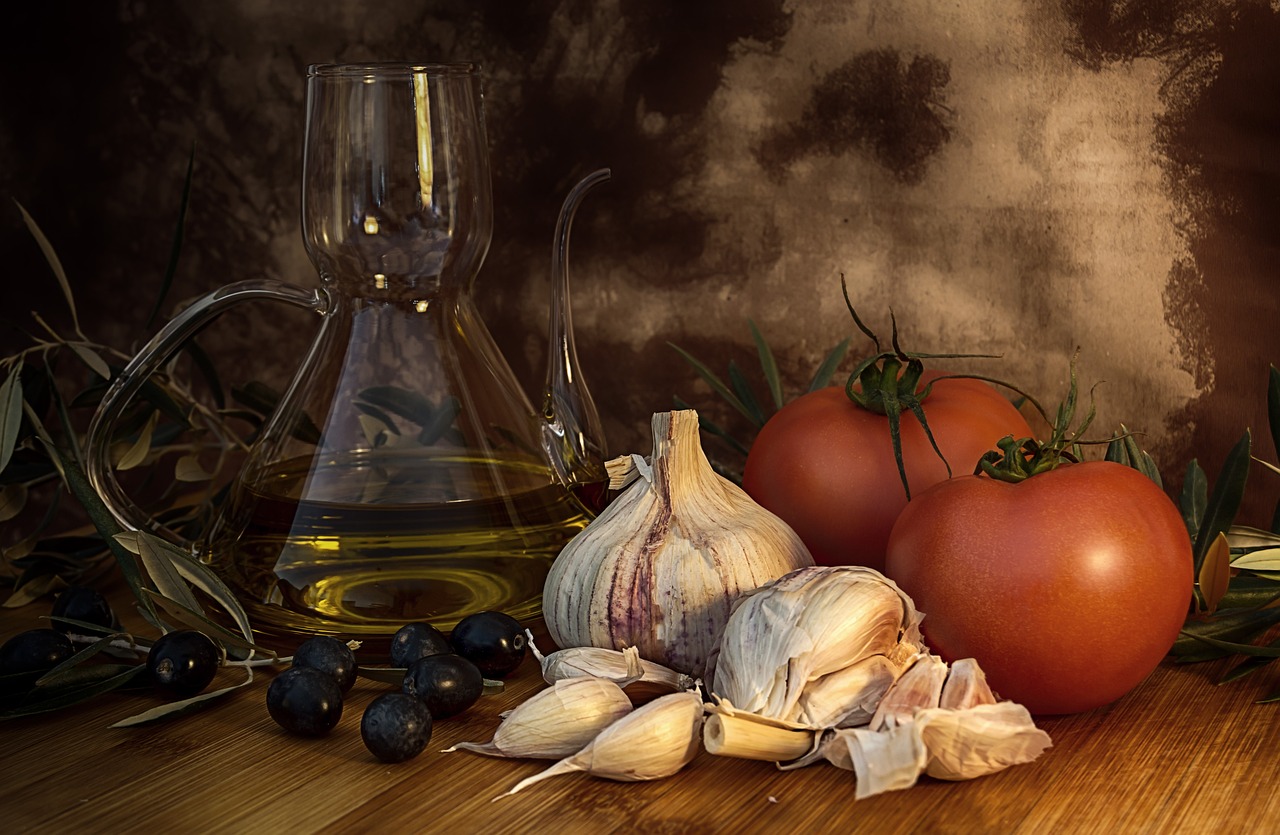
Essential Painting Supplies
When diving into the world of oil painting, having the right supplies is like setting the stage for a grand performance. You wouldn't want to walk into a concert without your instruments, right? Similarly, your painting experience can be greatly enhanced with the essential tools and materials at your disposal. Let's explore what you'll need to embark on this colorful journey!
First off, you'll need oil paints. These come in a variety of brands and qualities, from student-grade to professional-grade. The difference lies in the pigment concentration and the richness of the colors. If you’re just starting out, a basic set of student-grade paints can be a great way to experiment without breaking the bank. However, if you find yourself falling in love with the medium, investing in higher-quality paints will truly elevate your work.
Next on your list should be brushes. The type of brushes you choose can make a significant difference in your painting style. Brushes come in various shapes and sizes, each serving a unique purpose. For instance, flat brushes are fantastic for broad strokes and covering large areas, while round brushes are perfect for detail work. It’s also wise to have a variety of sizes on hand to tackle different aspects of your painting. Don’t forget to check out the different materials used for brush bristles; synthetic and natural hairs each provide unique textures and effects.
Now, let's talk about canvases. You can choose between pre-stretched canvases or canvas boards, depending on your preference. Pre-stretched canvases are ready to go, while canvas boards are more portable and can be easier to store. Whichever you choose, ensure that they are primed properly to avoid any unwanted absorption of paint. A well-prepared canvas is like a blank slate, waiting for your creativity to flow!
Another crucial item on your supply list is mediums. These are substances that modify the properties of your oil paints. For example, linseed oil can increase the fluidity of your paint, while turpentine can be used for cleaning brushes or thinning paint. Understanding how to use these mediums can unlock a world of possibilities in your artwork, allowing you to achieve different textures and finishes.
To keep your workspace organized, consider investing in a palette. A palette is where you'll mix your colors before applying them to the canvas. You can choose from wooden, glass, or disposable palettes, each offering a different experience. A well-organized palette can help you visualize your color choices and make the mixing process a breeze.
Lastly, don’t overlook the importance of cleaning supplies. Oil painting can get messy, and having the right tools to clean up can save you a lot of headaches. A good selection of rags, paper towels, and a container for your solvents will keep your workspace tidy and your brushes in excellent condition.
Here’s a quick summary of essential supplies you might consider:
| Supply | Description |
|---|---|
| Oil Paints | Variety of colors, student to professional quality. |
| Brushes | Different shapes and sizes for various techniques. |
| Canvases | Pre-stretched or boards, primed for painting. |
| Mediums | Enhance paint properties and textures. |
| Palette | For mixing colors before application. |
| Cleaning Supplies | Rags, paper towels, and solvent containers. |
With these essential supplies in your arsenal, you’re well on your way to creating stunning oil paintings. Remember, every artist has their unique style, so feel free to explore and find what works best for you. The most important thing is to enjoy the process and let your creativity shine!
- What type of oil paints should I start with? It's best to start with student-grade paints as they are more affordable and allow you to experiment without a huge investment.
- How do I clean my brushes? Use a solvent like turpentine or mineral spirits to clean your brushes, followed by soap and water to remove any remaining residue.
- Can I use regular canvases for oil painting? Yes, but make sure they are primed properly to prevent the oil from seeping into the canvas.

Choosing the Right Brushes
When it comes to oil painting, selecting the right brushes can make a world of difference in your artistic journey. Think of brushes as the extension of your hand; they are the tools that will help you express your creativity on canvas. But with so many options out there, how do you know which ones to choose? Let’s break it down!
First off, brushes come in various shapes and sizes, each designed for specific techniques and effects. The most common types include:
- Round Brushes: Perfect for detail work and fine lines. Their pointed tips make them ideal for creating intricate designs.
- Flat Brushes: Great for bold strokes and filling in larger areas. They can also create sharp edges when turned on their side.
- Filbert Brushes: A hybrid between round and flat, these brushes are versatile and excellent for blending.
- Fan Brushes: Perfect for texture and foliage; they can create unique patterns that add depth to your paintings.
Now, you might be wondering about the bristle type. Brushes generally come with either natural or synthetic bristles. Natural bristle brushes, made from animal hair, offer excellent paint-holding capacity and are great for blending. On the other hand, synthetic brushes are durable, easy to clean, and tend to be more affordable, making them a fantastic choice for beginners.
When choosing brushes, consider the size of your canvas and the scale of your work. For larger canvases, you’ll want bigger brushes to cover more area quickly. Conversely, if you’re working on a smaller piece, opt for finer brushes that allow for detailed work. It’s like cooking; you wouldn’t use a giant spoon to stir a tiny pot!
Another essential factor is the stiffness of the brush. Softer brushes are better for delicate applications and blending, while stiffer brushes can create texture and apply thicker layers of paint. Think about what kind of effects you want to achieve in your artwork. Do you want smooth, flowing lines, or are you aiming for a more textured, impasto style? Your brush choice should align with your artistic vision.
Lastly, don't forget about the handle! A comfortable grip can enhance your control and precision while painting. Look for brushes with ergonomic handles that feel good in your hand, as this can make long painting sessions much more enjoyable.
In summary, choosing the right brushes is about understanding your needs and experimenting with different types. Start with a small selection and gradually expand your collection as you discover what works best for you. Just like any artist, you’ll develop your unique style, and the right brushes will be your trusty companions along the way!
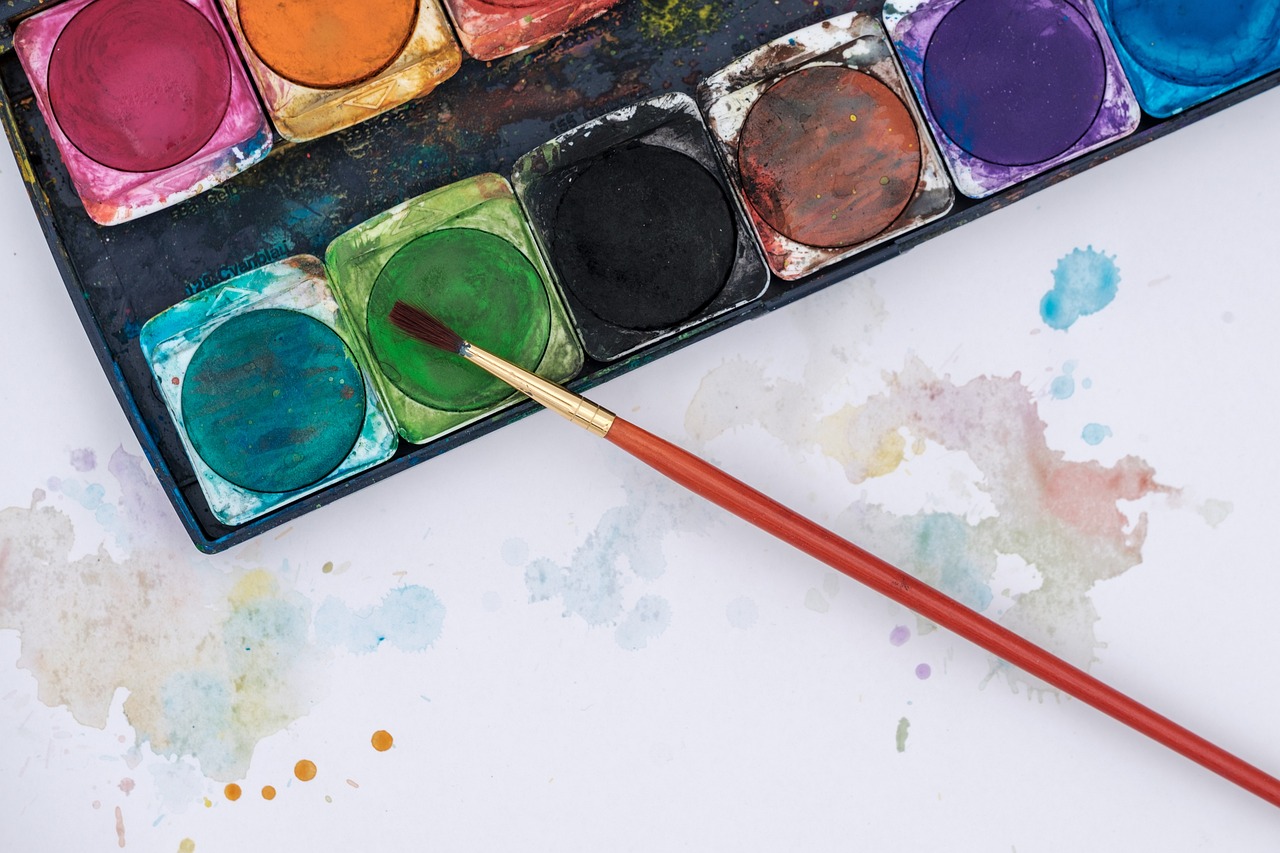
Brush Care and Maintenance
When it comes to oil painting, your brushes are your best friends. Just like a musician takes care of their instrument, you need to treat your brushes with the same level of respect. Proper brush care and maintenance not only prolong their lifespan but also enhance your painting experience. So, how do you keep those bristles in top shape? Let’s dive in!
First off, always clean your brushes immediately after use. Oil paint can dry quickly, and once it hardens, it’s like trying to get dried glue off your favorite shirt—nearly impossible! Use a solvent like odorless mineral spirits or turpentine to rinse out the paint. Swirl the brush in the solvent, then gently wipe it on a paper towel or rag. Remember, the goal is to remove as much paint as possible without damaging the bristles.
After you’ve rinsed out the paint, it’s essential to wash your brushes with soap and water. A mild soap, like dish soap or a specially formulated brush soap, works wonders. Lather up the bristles and rinse thoroughly until the water runs clear. This step removes any remaining paint and solvent, ensuring your brushes are squeaky clean.
Now, let’s talk about drying your brushes. Never stand them upright in a jar to dry, as this can cause the bristles to bend and lose their shape. Instead, lay them flat on a clean surface or hang them with the bristles facing down. This way, you’re preserving their natural form and ensuring they’re ready for your next masterpiece.
Storage is another crucial aspect of brush maintenance. Keep your brushes in a case or holder to prevent them from getting damaged. Avoid overcrowding, as this can lead to bent bristles. If you have a variety of brush shapes and sizes, consider organizing them by type or use, so you can easily grab the right one when inspiration strikes.
Lastly, if you notice any fraying or loss of shape in your brushes, don’t hesitate to reshape them. After cleaning, gently reshape the bristles with your fingers to maintain their intended form. This little step can make a big difference in how your brushes perform on the canvas.
To summarize, here’s a quick checklist for brush care:
- Clean brushes immediately after use.
- Use solvent followed by soap and water for cleaning.
- Dry brushes flat or hang them with bristles down.
- Store brushes properly to avoid damage.
- Reshape bristles after cleaning if needed.
By following these simple yet effective care tips, you’ll not only extend the life of your brushes but also enhance your overall painting experience. Remember, a well-cared-for brush can make all the difference in achieving that perfect stroke or blend. Happy painting!
Q: How often should I clean my brushes?
A: Ideally, you should clean your brushes after every painting session. If you’re switching colors frequently, a quick rinse in solvent will suffice until you can do a thorough cleaning.
Q: Can I use regular soap for cleaning my brushes?
A: Yes, you can use mild dish soap or specialized brush soap. Just avoid harsh detergents that can damage the bristles.
Q: What should I do if my brush bristles are splayed?
A: If your brush bristles are splayed, try reshaping them after cleaning. If the damage is severe, it might be time to invest in a new brush.

Brush Techniques
When it comes to oil painting, mastering can truly elevate your artwork to new heights. Each stroke can tell a story, convey emotion, and create depth. So, let’s dive into some of the most popular brush techniques that every beginner should explore to unleash their creativity.
One of the fundamental techniques is blending. This is where you seamlessly merge colors to create smooth transitions. Imagine painting a sunset; you want the orange and pink hues to fade into each other naturally. To achieve this, use a dry brush to softly blend the edges of two colors while they are still wet. The key is to work quickly before the paint dries, allowing you to manipulate the colors into a harmonious gradient.
Next up is glazing. This technique involves applying a transparent layer of paint over a dry layer, which can enrich the underlying colors and add depth. Think of glazing as adding a filter to your painting; it can enhance the vibrancy and create a luminous effect. A common approach is to mix a small amount of paint with a medium, like linseed oil, and apply it with a soft brush to achieve that glowing finish.
Another exciting technique is stippling, where you use the tip of the brush to create a series of small dots. This can be particularly effective for creating textures like foliage or the illusion of depth in skies. By varying the pressure and spacing of your dots, you can create stunning visual effects that draw the viewer in. It’s like creating a mosaic with paint, where each dot contributes to the overall image.
Additionally, there’s the impasto technique, which involves applying paint thickly to the canvas, allowing the brush strokes to stand out. This method adds a three-dimensional quality to your artwork, making it almost sculptural. If you want to give your painting a dramatic flair, consider using a palette knife along with your brushes to create bold textures and dynamic shapes.
Don’t forget about the importance of stroke direction. The way you hold your brush and the angle at which you apply it can dramatically change the outcome of your work. Experiment with different angles and pressures, and pay attention to how these factors affect the texture and appearance of your strokes. For instance, long, sweeping strokes can create a sense of movement, while short, choppy strokes can produce a more chaotic feel.
To summarize, here are some key brush techniques that can enhance your oil painting:
- Blending - Merging colors for smooth transitions.
- Glazing - Adding transparent layers for depth.
- Stippling - Creating textures with dots.
- Impasto - Applying thick paint for a sculptural effect.
- Stroke Direction - Varying angles and pressure for different effects.
As you practice these techniques, remember that the beauty of oil painting lies in experimentation. Don’t be afraid to mix and match these methods to discover your unique style. Each brushstroke is a step on your artistic journey, so embrace the process and let your creativity flow!
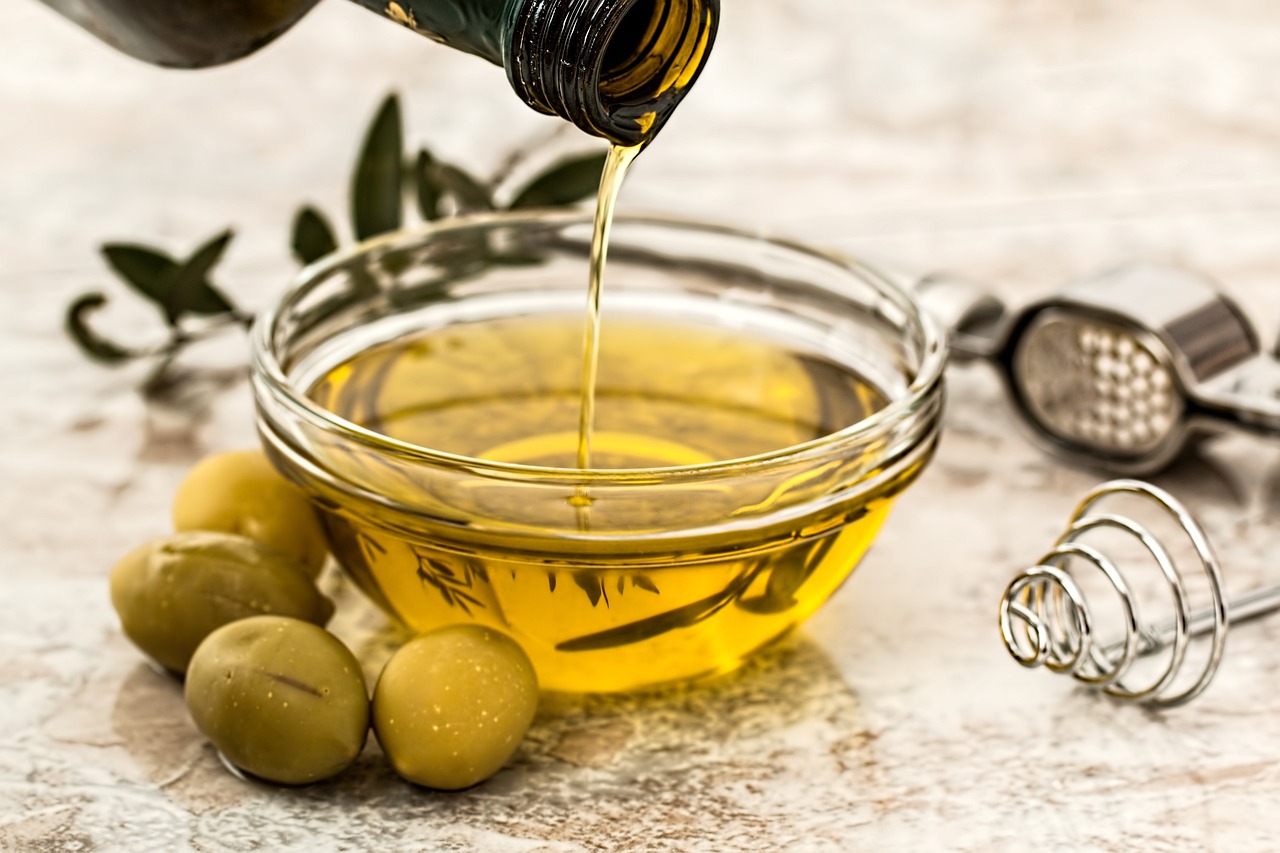
Preparing Your Canvas
Preparing your canvas is one of the most critical steps in the oil painting process. Think of it as laying the foundation for a house; if the foundation is weak, the entire structure could crumble. To get started, you need to choose the right type of canvas. There are various options available, including cotton, linen, and synthetic blends. Each type has its own unique characteristics, with linen being the most durable and high-quality choice. Cotton is more affordable and widely used, making it perfect for beginners.
Once you've chosen your canvas, the next step is to stretch it, if it’s not already pre-stretched. Stretching a canvas involves attaching it to a wooden frame, ensuring it's taut and ready for painting. This process not only provides a sturdy surface but also helps prevent warping. If you're feeling adventurous, you can even create your own stretcher bars and stretch the canvas yourself. It's a rewarding experience that adds a personal touch to your artwork!
After stretching, priming your canvas is essential. Priming creates a barrier between the oil paint and the canvas fibers, preventing the paint from soaking in and ensuring vibrant colors. You can use a commercially available gesso or make your own using white paint and a binder. Apply a thin, even layer of gesso with a brush, allowing it to dry completely before adding a second coat. This process not only prepares the surface but also enhances the texture, allowing your brush strokes to stand out beautifully.
Here’s a quick overview of the steps to prepare your canvas:
- Choose your canvas type: Cotton, linen, or synthetic.
- Stretch the canvas: Attach it to a wooden frame securely.
- Prime the canvas: Use gesso for a smooth, paint-ready surface.
Finally, consider the size of your canvas. Larger canvases can be intimidating but also offer more freedom to explore your creativity. If you're just starting, a smaller canvas might be less daunting and allow you to practice techniques without feeling overwhelmed. Remember, the goal is to enjoy the process and express yourself, so choose a size that feels right for you!
In summary, proper canvas preparation is a blend of choosing the right materials, stretching, and priming. Each step contributes to creating a surface that not only supports your artistic vision but also enhances your overall painting experience. So, take your time, enjoy the process, and get ready to unleash your creativity on that beautifully prepared canvas!

Basic Oil Painting Techniques
When it comes to diving into the world of oil painting, mastering basic techniques is like learning the ABCs of art. These foundational skills will not only enhance your creativity but also give your paintings a professional touch. So, let’s roll up our sleeves and explore some essential oil painting techniques that can help you bring your artistic visions to life!
One of the most fundamental techniques in oil painting is layering. This involves applying multiple layers of paint to create depth and richness in your artwork. Think of it like building a sandwich; each layer adds flavor and complexity. You start with a base layer, often a monochromatic underpainting, and gradually add colors on top, allowing each layer to dry before proceeding. This method is particularly effective for landscapes and portraits, where you want to achieve a realistic depth.
Another exciting technique is glazing. Glazing is all about transparency and luminosity. By applying a thin, transparent layer of paint over a dried layer, you can create a glowing effect that adds vibrancy to your colors. Imagine a stained glass window; the light shines through, revealing stunning colors that change with the light. To achieve this, mix your paint with a medium like linseed oil to thin it down, and apply it gently over your dry base layer.
Then, there’s the technique known as scumbling. This technique involves applying a thin, opaque layer of lighter paint over a dried darker layer, allowing some of the underpainting to show through. Scumbling can add texture and create a beautiful, soft effect, perfect for skies or backgrounds. It’s like adding a soft veil over your painting, allowing hints of the underlying colors to peek through, creating a sense of atmosphere.
To help you understand these techniques better, here’s a quick comparison of them:
| Technique | Description | Best For |
|---|---|---|
| Layering | Building up multiple layers for depth | Landscapes, portraits |
| Glazing | Applying transparent layers for luminosity | Vibrant color effects |
| Scumbling | Applying an opaque layer over a dry layer | Soft textures, atmospheric effects |
Now, let’s talk about creating texture. Texture can take your painting from flat to fabulous! One popular method is impasto, where you apply paint thickly, often directly from the tube, to create a three-dimensional effect. This technique can make your artwork almost sculptural, inviting viewers to reach out and touch it. Think of it as frosting a cake; the thicker you apply it, the more texture you get!
As you experiment with these techniques, remember that practice is key. Don’t be afraid to make mistakes; they are often the best teachers. Keep your brushes moving, your palette vibrant, and your creativity flowing. Before you know it, you’ll be blending, glazing, and scumbling like a pro!
In conclusion, mastering these basic oil painting techniques is essential for any aspiring artist. They not only enhance your painting skills but also allow you to express your unique style. So grab your brushes, unleash your imagination, and let your creativity soar!
- What is the best way to start oil painting?
Begin with basic materials, practice fundamental techniques, and don’t hesitate to experiment! - How long does oil paint take to dry?
Drying time can vary significantly, from a few days to weeks, depending on thickness and environmental conditions. - Can I use acrylic paint with oil paint?
No, it’s best to stick to one medium at a time. Acrylics dry quickly, while oils take longer, which can lead to complications.
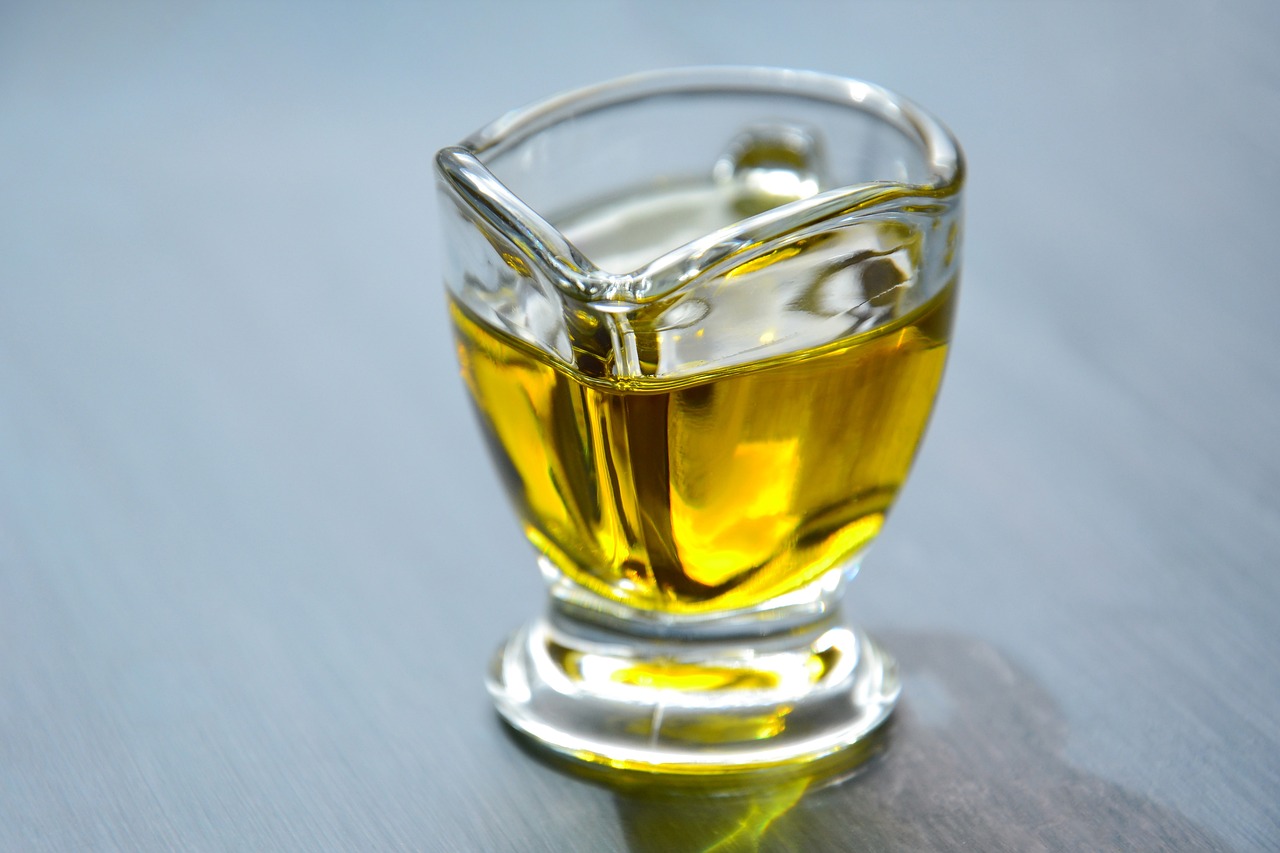
Color Mixing Fundamentals
When it comes to oil painting, understanding color mixing is like having a secret key to unlock a world of creativity. Imagine standing in front of a vast palette, each color waiting to be transformed into something extraordinary. Color theory isn't just a set of rules; it's a vibrant language that allows you to communicate emotions, create depth, and bring your artistic vision to life. So, let’s dive into the essentials of mixing colors and how you can apply them to your oil paintings.
First off, it’s crucial to grasp the difference between primary, secondary, and tertiary colors. Primary colors—red, blue, and yellow—are the building blocks of all other colors. By mixing these together, you can create secondary colors: green, orange, and purple. But wait, there’s more! Tertiary colors arise when you mix a primary color with a secondary color, resulting in hues like red-orange or blue-green. This foundational knowledge is your first step towards mastering the art of color mixing.
Now, let’s talk about the color wheel. This handy tool not only helps you visualize the relationships between colors but also guides you in creating harmonious palettes. For instance, colors that are opposite each other on the wheel, known as complementary colors, can create striking contrasts in your paintings. Think about how vibrant a sunset looks when the deep blues of the sky meet the fiery oranges and reds. By using complementary colors, you can add drama and excitement to your artwork.
Another important aspect of color mixing is understanding temperature. Colors can be categorized as warm (reds, oranges, yellows) or cool (blues, greens, purples). Using warm colors can evoke feelings of warmth and energy, while cool colors can create a sense of calm and tranquility. Balancing these temperatures in your paintings can help set the mood and draw the viewer's eye to specific areas. For example, if you want to highlight a subject in your painting, consider surrounding it with cool colors to make it pop.
One of the best ways to experiment with color mixing is through practice. Start by creating a simple color chart. Take a few primary colors and mix them in varying ratios to see how many shades you can create. You might be surprised at the range of colors you can achieve! This hands-on approach not only enhances your understanding of color relationships but also builds your confidence as you learn to mix colors intuitively.
Lastly, don’t forget about the importance of value in color mixing. Value refers to how light or dark a color is, and it plays a crucial role in creating depth in your paintings. By mixing colors with different values, you can create shadows and highlights that add dimension to your artwork. A simple exercise is to take a color and create a gradient by adding white to lighten it and black to darken it. This will help you see how value affects the overall look of your painting.
In summary, mastering color mixing in oil painting is essential for any aspiring artist. By understanding the basics of primary, secondary, and tertiary colors, utilizing the color wheel, exploring temperature, practicing with color charts, and considering value, you can elevate your artwork to new heights. So grab your brushes, mix those colors, and let your creativity flow!
- What are the primary colors used in oil painting? The primary colors are red, blue, and yellow. These colors cannot be created by mixing other colors.
- How do I create a complementary color? A complementary color is made by mixing two primary colors that are opposite each other on the color wheel.
- Can I use white and black to mix colors? Yes! Adding white will lighten a color (creating a tint), while adding black will darken it (creating a shade).
- What is the best way to practice color mixing? Create a color chart by mixing different ratios of primary colors to see the range of colors you can produce.
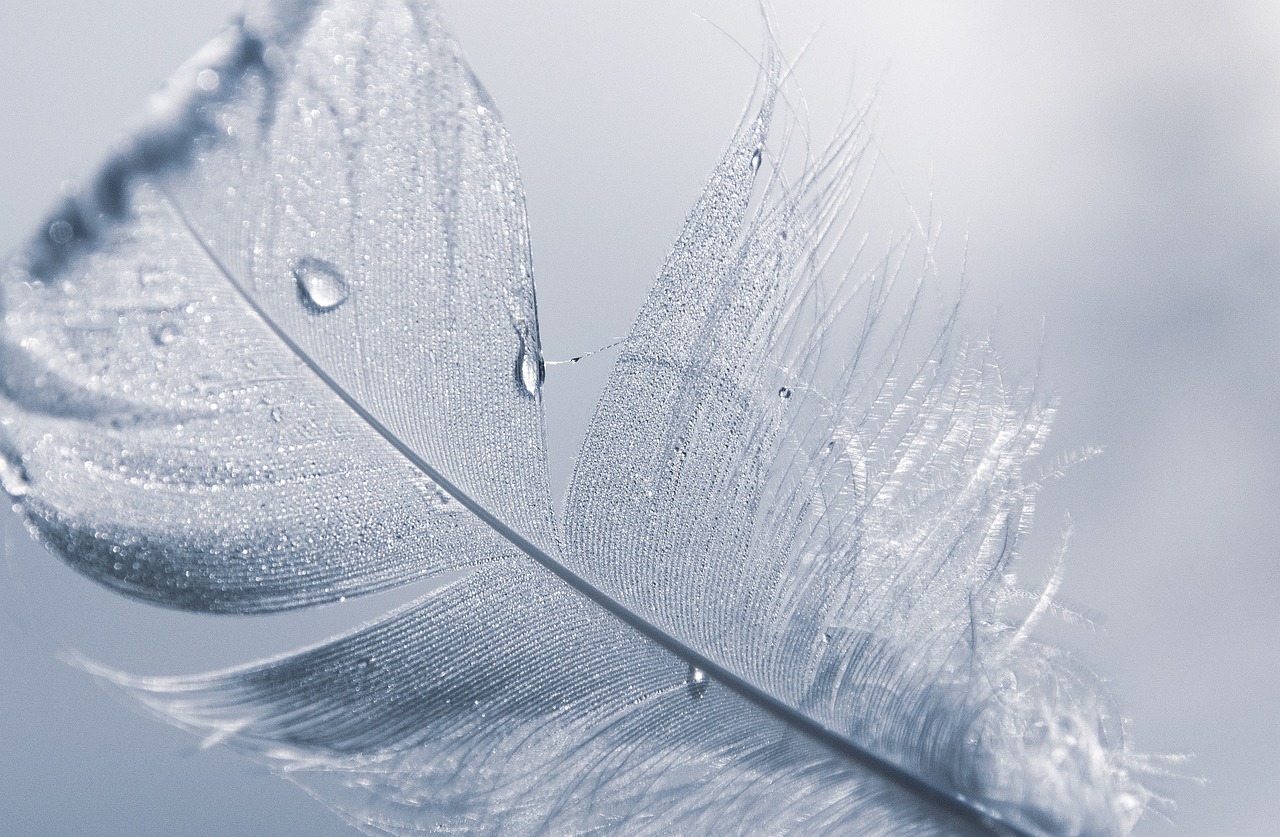
Creating Texture with Oil Paints
When it comes to oil painting, creating texture can transform a flat canvas into a vibrant, dynamic work of art. Texture adds depth and interest, allowing viewers to experience your painting not just visually, but almost physically. Imagine running your fingers over the surface of a painting and feeling the peaks and valleys of the brush strokes. Isn’t that a thrilling thought? In this section, we’ll explore various techniques to help you achieve stunning textures that can elevate your artwork to new heights.
One of the most popular methods for creating texture in oil painting is the impasto technique. This involves applying paint in thick layers directly onto the canvas, using a palette knife or a brush. The result is a three-dimensional effect that can make colors pop and shadows deepen. Think of it like frosting a cake—when you slather on that thick layer of icing, it not only looks delicious but also adds a delightful texture that makes you want to dig in. Similarly, impasto can make your painting more inviting and engaging.
Another effective way to create texture is through glazing. This technique involves applying a thin, transparent layer of paint over a dry base layer. By doing this, you can add complexity and depth to your colors. Imagine layering sheer fabrics to create a rich tapestry; glazing works in much the same way, allowing the underlying colors to shine through while adding a new dimension on top. It’s a subtle approach, but when done correctly, it can enhance the overall atmosphere of your painting.
Additionally, you might want to experiment with stippling, a technique where you use a brush or a sponge to apply small dots of color to the canvas. This method can create a soft, textured effect that is perfect for landscapes or backgrounds. Picture a field of flowers—each dot represents a bloom, and together they create a lush, vibrant scene. Stippling can bring a sense of movement and life to your artwork, making it feel more organic and alive.
To help you visualize these techniques, here’s a quick table summarizing the different methods of creating texture in oil painting:
| Technique | Description | Effect |
|---|---|---|
| Impasto | Thick layers of paint applied directly to the canvas | Creates a three-dimensional effect |
| Glazing | Thin, transparent layers of paint over a dry base | Adds depth and complexity |
| Stippling | Small dots of color applied with a brush or sponge | Creates a soft, textured effect |
Don’t forget about the importance of experimenting. The beauty of oil painting lies in its versatility, so don’t hesitate to mix and match these techniques or even invent your own! Try combining impasto with glazing for a unique effect, or use stippling over an impasto base to create a stunning contrast. The only limit is your imagination, and that’s what makes oil painting such an exciting and rewarding endeavor.
As you practice these techniques, remember to be patient with yourself. Texture can take time to master, but with each brushstroke, you’ll gain more confidence and skill. So grab your brushes, squeeze out some paint, and let your creativity flow. Who knows? You might just create a masterpiece that’s bursting with texture and life!
- What is the best way to start creating texture in my oil paintings? Begin with impasto for immediate results, then explore glazing and stippling as you gain confidence.
- Can I use tools other than brushes for creating texture? Absolutely! Palette knives, sponges, and even your fingers can create unique textures.
- How do I know when to use thick vs. thin paint? Thick paint is great for impasto effects, while thin paint is ideal for glazing and subtle textures.
Frequently Asked Questions
- What are the main differences between oil paints and other mediums?
Oil paints are unique because they use oil as a binder, which gives them a rich, vibrant color and a long drying time. This allows for greater blending and layering compared to mediums like acrylics or watercolors, which dry quickly and have different textures.
- What essential supplies do I need to start oil painting?
To begin your oil painting journey, you’ll need a few key supplies: oil paints, a selection of brushes (synthetic and natural), a canvas or canvas board, a palette for mixing colors, and a medium like linseed oil. Don’t forget a cleaning solution, such as odorless mineral spirits, for your brushes!
- How do I choose the right brushes for oil painting?
Choosing the right brushes is crucial! Look for brushes made specifically for oil paints, which are typically stiffer. You'll want a mix of shapes: flat brushes for broad strokes, round brushes for details, and filbert brushes for soft edges. Experiment to find what feels best for your style!
- What is the best way to care for my brushes?
Proper brush care extends their life! After each painting session, clean your brushes with a solvent like mineral spirits, then wash them with soap and water. Always reshape the bristles and store them upright or flat to maintain their shape.
- Can you explain basic oil painting techniques?
Absolutely! Key techniques include layering, where you apply multiple transparent layers of paint; glazing, which involves applying a thin, transparent layer over dried paint to enhance depth; and scumbling, where you apply a thin layer of lighter paint over a dry layer to create texture.
- What is color mixing, and why is it important?
Color mixing is the process of combining different hues to create new colors. Understanding color theory helps you achieve the desired tones in your artwork, allowing for a more cohesive and dynamic palette that can bring your paintings to life!
- How can I create texture in my oil paintings?
Texture can be achieved through various techniques, such as impasto, where paint is applied thickly to create a three-dimensional effect. You can also use tools like palette knives or sponges to add unique textures and visual interest to your work.



















